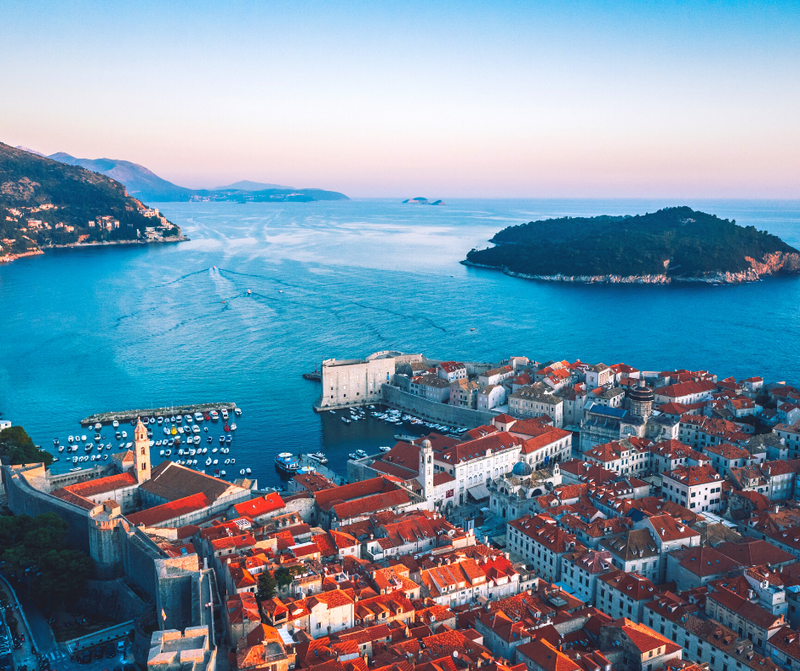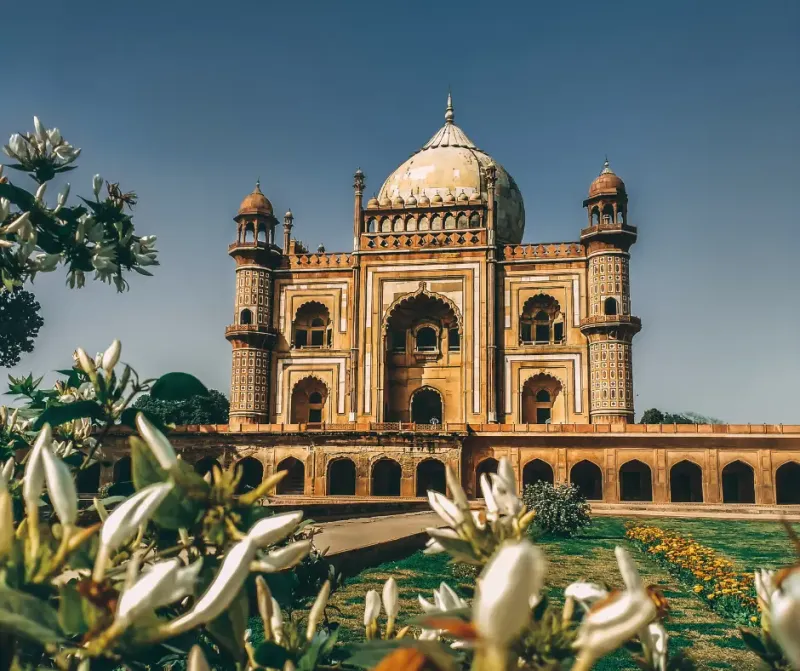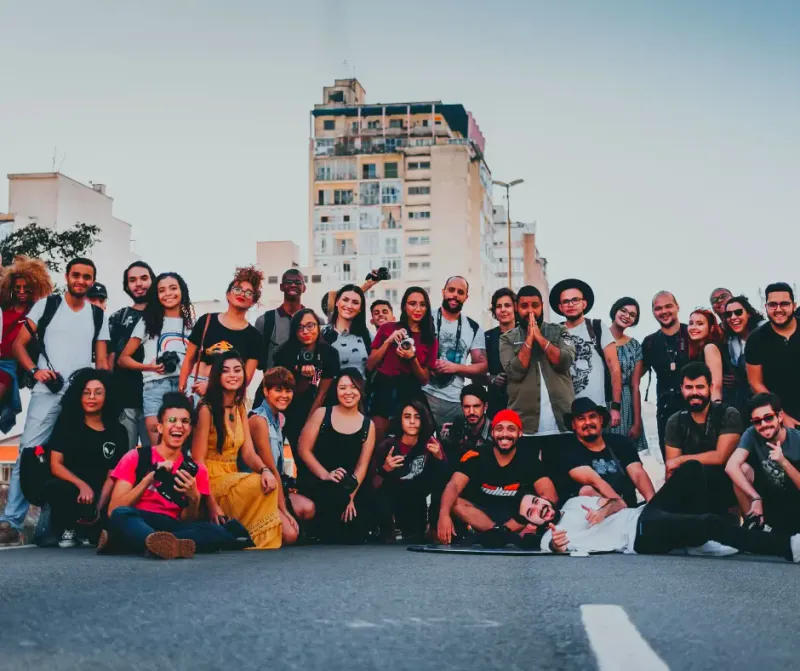Last updated 2022, September 12th: Full of beaches, full of world heritages, full of flavors, full of trails, full of paradises, full of adventures, full of trails, and full of Game of Thrones - this is how the official tourism board promotes Croatia.
The country is a beautiful gem on the Adriatic coast and lies directly in the hinterland of the Mediterranean sea. Croatia shows lush biodiversity with more than 444 protected natural areas. Come with me, and discover Republika Hrvatska, as it is called in the Croatian language.
🇭🇷 Entry requirements for Croatia
To enter Croatia which is a member state of the European Union, please make sure you either have a valid Schengen visa or exemption or you are a citizen of the EU Schengen zone by providing a valid ID card or passport. The following points are good for you to bear in mind.
- Valid visa: You need a visa if you are a non-Schengen citizen or you do not have a national ID/passport for Schengen citizens.
- Travel health insurance: If you need a Schengen visa to enter the EU, you also need health insurance in order to match the Schengen requirements and minimum coverage of €30,000. Check out Genki's health insurance and tick this off your list.
🌱 Travel health insurance for Croatia
🏡 How to find a place
- Airbnb: Airbnb has way more listings than Flatio and other booking platforms, however, it is advisable to compare different platforms as prices vary a lot. You might be shocked to find out that monthly rents in the centers, for example, in Dubrovnik and Split, can be between 1,500 Euros (lucky) or up to 3,000 Euros when booking last-minute for high-season months like June to August.
- Hotels: In times when Airbnb and co. are not as fun to book anymore, due to the high fees platform charges, the dynamic pricing models most hosts now use, and the overall host-focused business model to gain as much profit as possible, it is worth the time to check on hotels on Agoda, booking.com, or Google.
- Facebook groups: Check out APARTMENTS&HOLIDAY HOMES CROATIA, Croatia Apartments 2022 ⭐⭐⭐, Top apartments and private accommodation in Croatia, and ❤Croholiday - apartments & villas in Croatia❤ for better deals.
✈️ How to get to Croatia
- Plane: Most convenient and probably cheapest way for getting to Croatia is by plane. Zagreb, Pula, Zadar, Split, and Dubrovnik airports handle daily flights from major European cities, Asia, and North America. Cheap airlines like Easyjet, Eurowings, or Wizz Air are operating between European cities and Croatia. Starting from the US you can check out the schedules of KLM, Lufthansa, and Swiss Airlines.
- Train: You can reach the main towns by train, for example, Zagreb, Pula, Rijeka, and Split. A good source for train travel is probably Deutsche Bahn.
- Ferry: When arriving from Italy, and Greece, you can enter Croatia by ferry, for example, Pula, Zadar, Split, and Dubrovnik.
- Bus: With the European bus network, you have several options for entering Croatia by bus. Metropoles like Berlin, Prague, Vienna, or Budapest have daily connections operated by Flixbus.
🚌 Public transport
- Zagreb: The capital Zagreb has the best public transport. With 15 daytime and 4 nighttime routes, Trams are a good option for getting around the city. You get tram tickets in every kiosk for 10 Kn (1.30 Euro). You can also get day tickets (4 Euro) or multiple day tickets between 10 and 20 Euro. Zagreb has an extensive bus network too, with busses operating through the night. From the airport, you can choose to take a shuttle bus (4 Euro), bus line 290 (0.50 Euro), or a taxi (25 Euro). Uber is available in Zagreb.
- Dubrovnik: The drive from the airport to the city is approximately 20 minutes by taxi (40 Euro), and 35 minutes by bus (4 Euro). In Dubrovnik, you can choose the local bus with tickets starting at 1.50 Euro. Uber is available in Dubrovnik.
- Split: The yellow buses are the main form of public transport in Split. Coming from the airport, take bus lines 2, 37, or 38 to the city center. Tickets cost 3 Euro. A taxi ride between the airport and the city center costs between 34 to 40 Euro. Uber is available in Split.
🏘 Where to stay in Zagreb
- Donji Grad: Also known as the lower town, Donji Grad is the lively center of Zagreb, and it is a good area to stay for shopping, cafés, restaurants, and parks. A 1-bedroom apartment costs around 700 Euro a month.
- Salata: This modern area comes with newly built houses and business blocks, and got popular among expats. A 1-bedroom apartment costs around 1,500 Euro a month.
🧑🏻💻 Where to work from in Zagreb
Coworking spaces
- Wespa spaces: This modern coworking venue is centrally located in Stara Peščenica, the administrative city district of Zagreb. Besides the standards, there is a restaurant and opportunities to rest in the middle of the day. A 1-month membership starts at 187 Euro.
- Hub385: Offices are spread out on 3 floors, with workspaces and chill-out areas. The coworking space is close to the Upper Town with its bars, restaurants, and cafés. The Jagićeva train station and the Zagreb Zapadni Kolodvor train station are just a 5-min. walk away. A monthly membership at Hub385 costs 167 Euro.
- BIZkoshnica: Located in Ilica, the British square, BIZkoshnica is easy to reach from anywhere in the city. The cozy coworking space offers 35 workplaces, several meeting rooms, and lounge areas. A 1-month membership including 24/7 access costs 187,50 Euro.
Coffee shops
- Quahwa: A popular spot for digital coffee lovers is Quahwa roastery. The trendy café is inside an industrial-styled house right in the city center. You can choose to work outside from their terrace or inside from comfy armchairs. Wifi is fast and reliable.
- Viva Bars: Vivas Bars are in several locations around town and is a good address when searching for reliable wifi, coffee selections, and a tasty snack. Your battery level is also covered by plenty of sockets nearby.
🏘 Where to stay in Split
- Bacvice: This part of Split is home to its popular nightlife. You find a 1-bedroom apartment for 1,200 Euro a month.
- Old town: The old town is the historical and cultural center. Many tourist attractions are here, as well as the local markets and magnificent old buildings. Prices can be incredibly high with monthly rents starting at 2,000 Euro.
🧑🏻💻 Where to work from in Split
Coworking spaces
- The works: The coworking space is centrally located and offers a full package of coworking amenities such as ergonomic chairs and desks, 24/7-access, phone booths, and office equipment for rent. You get a monthly membership for 240 Euro.
- Meridien ten: Opened in 2020, this coworking space offers a modern working atmosphere, combined with rentals of bikes or paddle boards. Included in the monthly membership (140 Euro) is a dedicated desk and between November and April a hybrid/touring bike too!
- Smart space: The coworking space is located in the cultural center of Split and is easy to reach from many districts. Monthly memberships cost 320 Euro and include 24/7 access to all office, kitchen, and outdoor areas.
Coffee shops
- Art Gallery Café Music Bar: Inside its gallery, you may find a quiet and pleasant place to work including a tasty food menu.
🏘 Where to stay in Dubrovnik
- Old Town: If you visit Dubrovnik for the first time, the old town is a good start for your stay. You are close to the main attractions, cafés, bars, and boutiques. It is also the most touristy area, and prices for a furnished 1-bedroom apartment start at 1,600 Euro a month.
- Lapad: Lapad peninsula is on the west end of Dubrovnik and here you find a good mix of local residences and touristic guesthouses. Rent is probably cheaper than in Old Town with prices starting from 1000 Euro per month.
🧑🏻💻 Where to work from in Dubrovnik
- Lazareti Gourmet Bar & Resto: In walking distance of the old town, you find Lazareti, a restaurant, and bar, suitable for a short work session. This place is suitable for events like workshops and fairs.
🚊 How to travel around Croatia
- Bus: The country has an extensive bus network and also taking the ferry is easy and safe. A one-way bus ticket from Zagreb to Split is about €20 and from Zagreb to Dubrovnik, it is €30.
- Train: Traveling by train is very limited.
- Car rentals: Another good way to travel around Croatia is by renting a car. The streets are wide and modern and it feels easy to navigate. A car might cost you somewhere between €20 and €80 per day, depending on the season.
🎖 Must see
- Gornji Grad in Zagreb: Gornji Grad, also known as Upper Town, is the main sightseeing area of Zagreb. You find many attractions here and some of the buildings date back to the 11th century. In Upper Town, visit historical monuments like the Church of St. Mark or the Tower of Lotrscak (ticket is 2,50 Euro) and the fun and interesting Museum of Broken Relationships (7 Euro entrance fee).
- Old town in Split: The old town of Split with its small alleys surrounding Diocletian’s palace is a must-see. The heart of the old town is Narodni Trg, a square with lovely cafés, bars, and restaurants.
- Diocletian’s Palace in Split: The ancient fortress was built for the roman emperor Diocletian in the 4th century. Each wall has a gate, named by the metal is its build from: Golden Gate, Bronze Gate, Silver Gate and Iron Gate. Entrance to the palace is free.
- Krka National Park: Located in central Dalmatia mountains, the National park offers spectacular natural scenery and wildlife. The park is known for several gushing waterfalls, hidden caves, and emerald green natural pools. Easily reached within a 1-hour drive by car or bus from Split or Zadar. Prices depend on the park’s entrance location and vary from 20 to 25 Euro.
💡 Good to know
- Internet: The Internet is fast and reliable in Croatia, as long as you are in an urban area. The average mobile speed is around 66 Mbps and the fixed internet speed is about 43 Mbps download and 19 Mbps upload. Many towns have free wifi hotspots in their town centers, in parks, and also in public transportation.
- Sim card: Sim cards are available in almost every convenience store or airport. A Hrvatski Telekom tourist sim card with unlimited data costs 11.20 Euro.
- Cost of living: Compared to Western Europe or the USA, the cost of living in Croatia is very good. You can rent an apartment in Zagreb for around €700/month. Zagreb and Split are popular destinations in Croatia and therefore, more expensive than less popular, and rural locations.
- Safety: Croatia is a very peaceful country and ranks 17/163 in the Global Peace Index (Germany for example ranks 18/163). The country is very safe. It ranks 14/135 in the Global Safety Index (Germany ranks here 42/135).
- Digital nomad community: The digital nomad community in Croatia is scattered, and I would distinguish between destinations you want to work from or those you want to spend your holiday. Dubrovnik, for example, is very popular and famous, however, it comes with millions of tourists each year. Keep this for taking a break and have a closer look in Split, Zagreb, or Rijeka. If you are looking for an island, hop on a ferry to Brac.
- Designated digital nomad village: Croatia launched the Digital Nomad Valley Zadar, a community-driven accommodation and coworking facility that dedicates its mission to serving digital nomads. The community is based at the Falkensteiner Resort and open to digital nomads between October and March.
- Coworking spaces: You find good coworking in Croatia, check out Saltwater coworking spaces in Split, Dubrovnik, Zadar, and Hvar.
- English: Many people in Croatia speak English which makes it easy for you to communicate.
- Worth a visit: Zagreb's Museum of Broken Relationships. A museum dedicated to pain, loss, and love (yes, it is not all unicorn-poo-and-rainbow-sparkle-Koh-Phangan-star-dust in this world). If you are interested in human behavior, human relationship, or psychology, it might interest you.
- Culture: You find 10 UNESCO World Heritage sites in Croatia, from the Palace of Diocletian in Split, the Old City of Dubrovnik, or the Stari Grad Plain, an agricultural landscape designed by the ancient Greeks.
- Nature: Croatia is one of the richest European countries when it comes to biodiversity. You can find 444 protected natural areas in Croatia, including 8 national parks. Croatia protects terrestrial and marine areas, including the bottlenose dolphins and from around 400 bird species found in the country, more than 230 are nesting here. Read more about wildlife protection in Croatia here.
- Landscapes: Due to its diverse geomorphology and climate, Croatia can be divided into several ecoregions, that offer everything from the Mediterranean coastline to the rocky karst landscape, lush forests, and crystal clear waterfalls. Every region comes with trails, cycling routes, and other adventurous outdoor activities.
- Dance at music festivals: The team behind the Futureboogie record label organizes not only the Love Saves The Day festival in Bristol but also Love International in Tisno, Croatia. The location is halfway between Split and Zadar on the beautiful coast. Other summer festivals are Senses on Pag island, Ultra Europe in Split, and Fresh Island Week on Pag island.
🚧 What to avoid
- Overtourism in Dubrovnik: Dubrovnik welcomes 1.4 million tourists every year (pre-Covid), and the historic city counts less than 29,000 inhabitants. There are 48x more tourists in Dubrovnik each year than people living. Some cruise ships spit 4,000 cruise ship tourists at once who squeeze themselves through the narrow alleys of the Old City. Check here how many cruise ships will arrive during your time in Dubrovnik and avoid them. Additionally, you want to avoid the peak season which is the summer months between June and August.
- Noisy accommodation: Bear in mind that the closer you stay to Dubrovnik's or Rovinj's Old Town, main attractions, and most popular streets, the noise level of your accommodation will rise.
- Overpaying: Remember, the closer you stay to a port, the old towns, and the main tourist attractions, the more you will spend on food and drinks. Businesses in top locations have higher expenses (rent, for example) to pay, and they forward the bill to their customers. Additionally, my own experience is when destinations are set up for day tourists, the overall quality is lower as businesses don't count on day tourists to become loyal customers.
- Assuming all Croatian beaches are sandy: Most Croatian beaches are pebble beaches, rocky beaches, or made of concrete with ladders for easy access. If you are looking for sandy beaches, check out Rab island, Hvar island, Split, Privlaka, Omis, Zadar, Brac island, or Nin.
- Paying with big notes: I know, money is money, no matter if you pay your 12 kuna (€1,50) cappuccino with your Amex or a 1,000 kuna (€133) note. But many small shop owners don't have enough change and it is considered disrespectful to pay small amounts with big notes. Although I am a big fan of coin-free currencies, such as the dong in Vietnam, get into the habit and collect coins to pay for little things.
- Paying in Euro: Croatia has its own currency. Locals are paid in kuna, and instead of making them exchange your currency, or losing money over changing exchange rates by accepting foreign currencies, just go to the ATM and get domestic currency. Please note that the country will officially start using Euro as its own currency from 2023 on.
- Eating take-out in public transport: Having a slice of greasy pizza doesn't bother people in London, but it does bother locals in Croatia. No smelly food in public transport, please!
- Tipping: Tip restaurants and taxis if they delivered great service by 10%.
- Talking politics: For some Croatians, history has been painful. Wars, corruption, and suppression have happened. I am not saying no Croatian would love to discuss with you the Soviet times, or the Second World War, but... maybe... please consider that they don't. For their very own personal reasons. So, don't open wounds.
- Disrespecting religion: Croatians are mainly catholic, and you find architecturally beautiful churches and cathedrals all over Croatia. Don't use religious places and sites as instagramable selfie-photoshoot and wear appropriate clothes before entering the site.
🚴🏻♀️ How to stay healthy
Stay healthy
There are endless ways how to stay active and fit in Croatia. You might want to visit film sets of Game of Thrones (or not), dance all night at one of the many epic music festivals (that is more me), or simply want to hike in one of Croatia's lush national parks (yes!).
- Hike to Medvedgrad: A good trailhead is Šestine, 10 minutes outside the city of Zagreb. You can get there by tram and bus for just 3 Euro. In Šestine you follow the Miroslavac path to Kraljičin Zdenac. From here follow route 12 to the historical castle Medvedgrad until you are back in Šestine. The total loop is about 7 km and is doable for unexperienced hikers too.
- Stair climbing at Marjan Park in Split: This appealing park at the edge of the old town in Split is a great path for hiking and trail running. Stunning views included.
- Hiking at Krka National Park: The park offers several hiking tours for almost every fitness level. Depending on the route you choose, you might have to pay for the entrance. The drive from Split or Zadar to the park is about 1:10 by bus and costs 10 Euro. At every entrance, you can also get information about hiking tours or book a guide.
- Hiking in Mljet National Park: The island of Mljet has a 43 km long trail, which can be easily divided into a few hour hikes. Get ready for epic views and sore muscles. Check the trails here.
- Game of Thrones City Tour: Just because I have no interest in Game of Thrones, I want to inform you, that there are guided tours to film sets in Dubrovnik. I haven't done it, but if you have, please tell us on our Discord channel, how you have liked it.
- Kayaking at the Adriatic coast: Split is a good place for some kayaking or the island Molat with its towering stone stacks that create paddlers the perfect playground.
- Run the Stone Wall Marathon: Join the 4 to 42 km long marathon in the city of Ston. You run along the massive stone wall and you are rewarded by breathtaking views of the Adriatic islands. Check out the marathon here.
Health risks
- Water quality: Yes, you can drink tap water in Croatia.
- Air quality: The air quality in Croatia is moderate.
⚓️ Long stay
Since January 2021, Croatia offers long-term residence for EU/non-EU nationalities who want to stay longer than 90 days.






